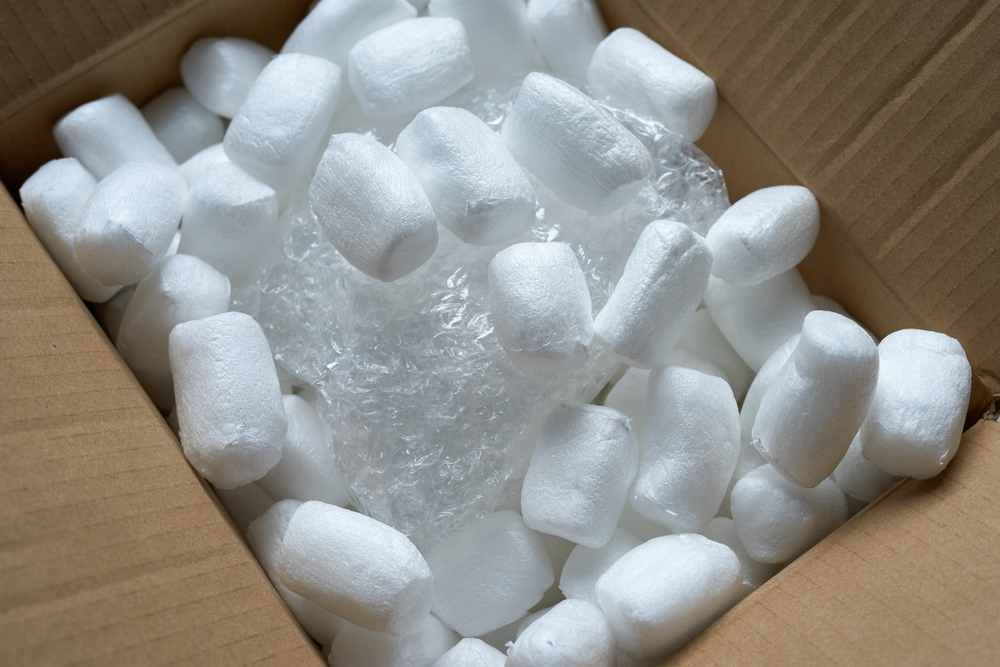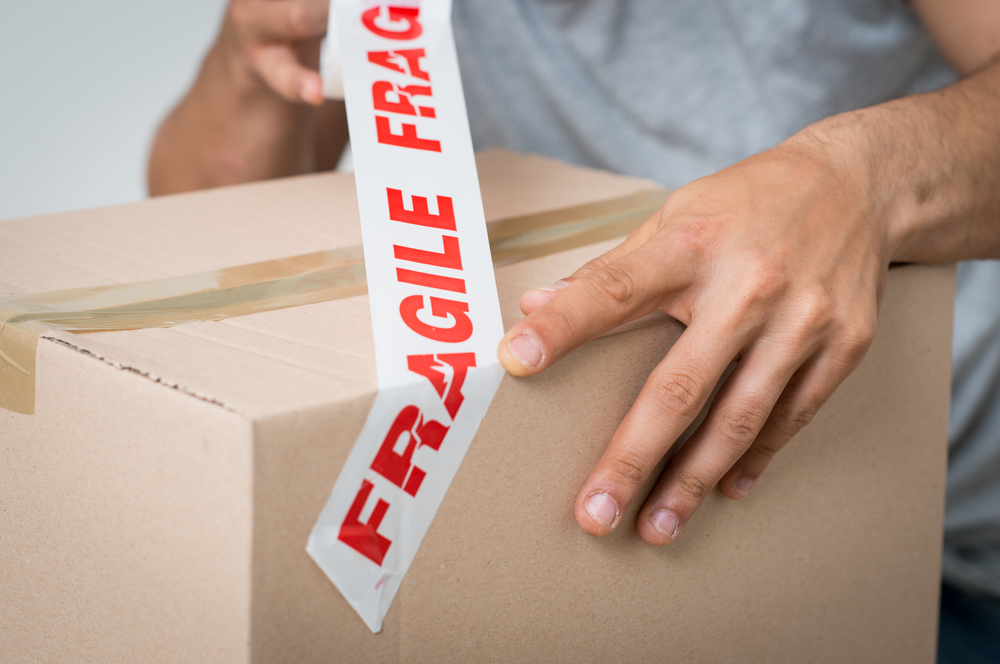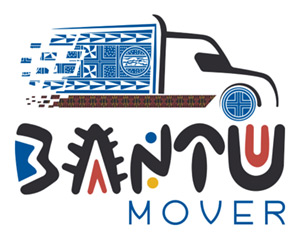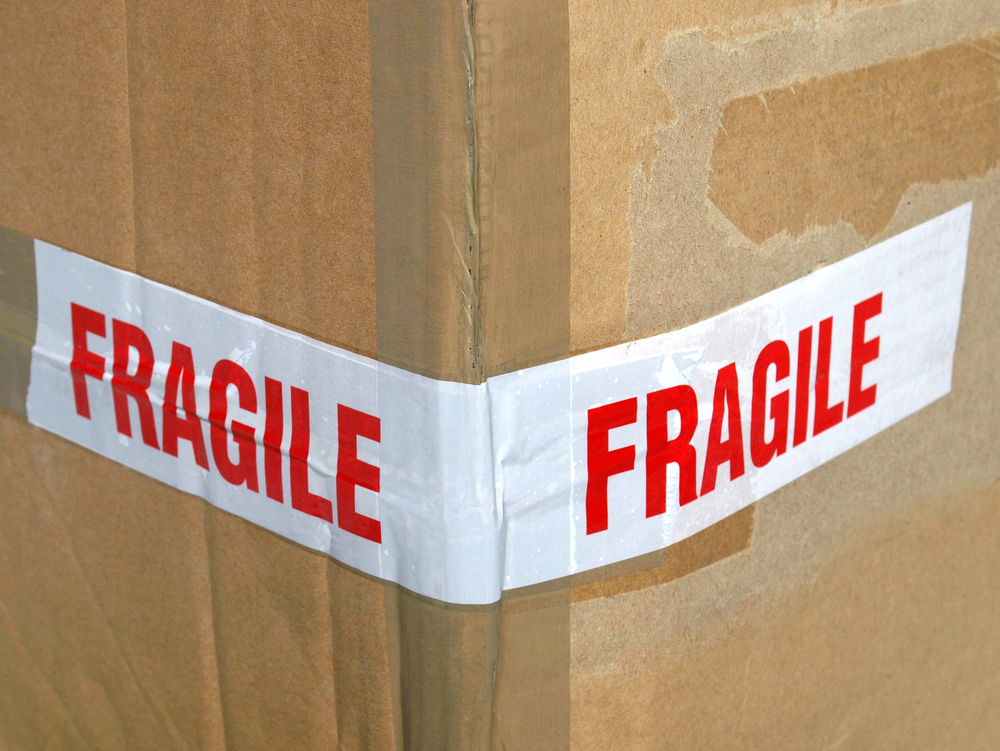While moving is stressful, it is typically a great experience that opens up an entirely new world of opportunities.
However, your big chance to start over somewhere new can hit a bit of a road bump if you get there and find out an irreplaceable, fragile, item has been lost or destroyed in transport.
This sort of thing happens all the time, and whether it happens in a moving company’s car or the mover’s car, it’s always a stressful and disappointing time.
Luckily, that’s not a risk you have to take. There are some basic ways to protect your valuables while packing and moving fragile items.
As a moving company, we’re pros at this, and we’ve put this guide together on how to pack fragile items effectively.
1: Store All Fragile Items in Their Own Box
One of the main things you need to avoid is allowing your fragile items to clank against other items. That’s one of the two most common ways for fragile items to get broken while transporting them.
So, you want to pack each item individually whenever possible. If items are too small to do that, you’ll want to put plenty of protection between each of them such as individually bubble wrapping them.
2: Prepare the Item with Protective Wrapping
Before you ever pack the item, you want to make sure you add plenty of protection around the item itself. This will help ensure that it has more protection if the box gets dropped, banged against something, etc. If you just lay the item in the box, even if you follow our other prep tips, you risk breaking it.
The most common material used for wrapping is soft packing paper. This is like tissue paper, but it’s a bit thicker.
This is a decent amount of protection against scratches, dust buildup, etc. However, it’s not a whole lot of protection against impacts. If the item you’re packing is something that’s unlikely to break, this is a fine option to protect it. However, if it’s a vase or something similar, you’ll want to add something else.
Bubble wrap is preferred in those situations. It provides a great layer of protection, can be easily wrapped around most items, and can reliably protect your valuables.
3: Prepare the Box
Before your wrapped item goes in a box, you need to prepare the box to the best of your abilities. Even with bubble wrap or wrapping paper, it’s unlikely that your one item will fit the box perfectly, and you don’t want it rattling around.
Consider placing foam on the bottom of the box before inserting the item and then on the top and sides of the item afterward.

If the item is small enough that there’s a considerable amount of room, consider packing peanuts. These little foam peanuts can fill in the entire space surrounding the item, and they provide plenty of impact resistance if you drop the box or it slams into anything. It will also keep the item still if you add enough of it to the box to hold it in place.
Regardless of what you use, you want to make sure that the item is held in place and the walls of the box are padded.
4: Use High-Quality Boxes
We know you want to save money, but don’t go cheap on the boxes that will be holding your valuable, fragile, items.
Flimsy boxes can rip while being carried around, and your priceless item can end up shattered on the ground. Cheap boxes are also thinner and provide less protection.
It’s alright to use cheap boxes for items that obviously can’t break such as clothing or your kid’s loose action figures, but when you’re packing and moving fragile items, it’s worth the extra expense to buy new, high-quality, packing boxes.
5: Double Up on Good Tape
Once you have your items in their boxes, you still need to close everything up and make sure it can’t fall out. Tape is perfectly fine for this, but you need to avoid being skimpy.
First, buy good, high-quality, strong tape for fragile item packing. Your basic clear tape you can get multiple rolls of for a dollar simply isn’t good enough. Buy some high-quality duct tape.
Then, double-tape the box. Even though you’re using good tape, you want to make sure it’s adhered to as well as it possibly can be. If your tape gives out, none of the other protective measures you’ve taken will matter.
Again, this isn’t something you need to do for all your items, but it is well worth the expense, and it can mean the difference between safely transporting your item or losing it forever.
6: Mark the Box Boldly
Always make sure you mark your fragile item boxes in a way that is immediately noticeable.

If you hire a mover, this will tip off the workers to take extra care of those specific boxes, and you won’t have to worry about the unfortunate case of a worker destroying your stuff on accident.
Even if you’re the one handling your move, this helps a lot. You’ll likely have help that doesn’t know how you packed everything, and you can forget which boxes have fragile items, too.
We recommend using a permanent marker and writing FRAGILE in big, bold letters on the top of the box.
7: Hire a Moving Company
Finally, you want to hire a moving company. Professional movers handle fragile items packing all day every day, and they know how to get them from one home to the other without breaking them.
You have a lot on your plate. You can get distracted, your friend who is helping can be a little clumsy, or any number of things can happen due to you having lots of things to do beyond just carrying boxes around.
The best way to ensure your fragile items and antiques get to your new home safely is to hire pros who solely worry about moving your items.
If you’re ready to move, contact Bantu Mover for a moving service that can protect your items and take the stress out of your move.

